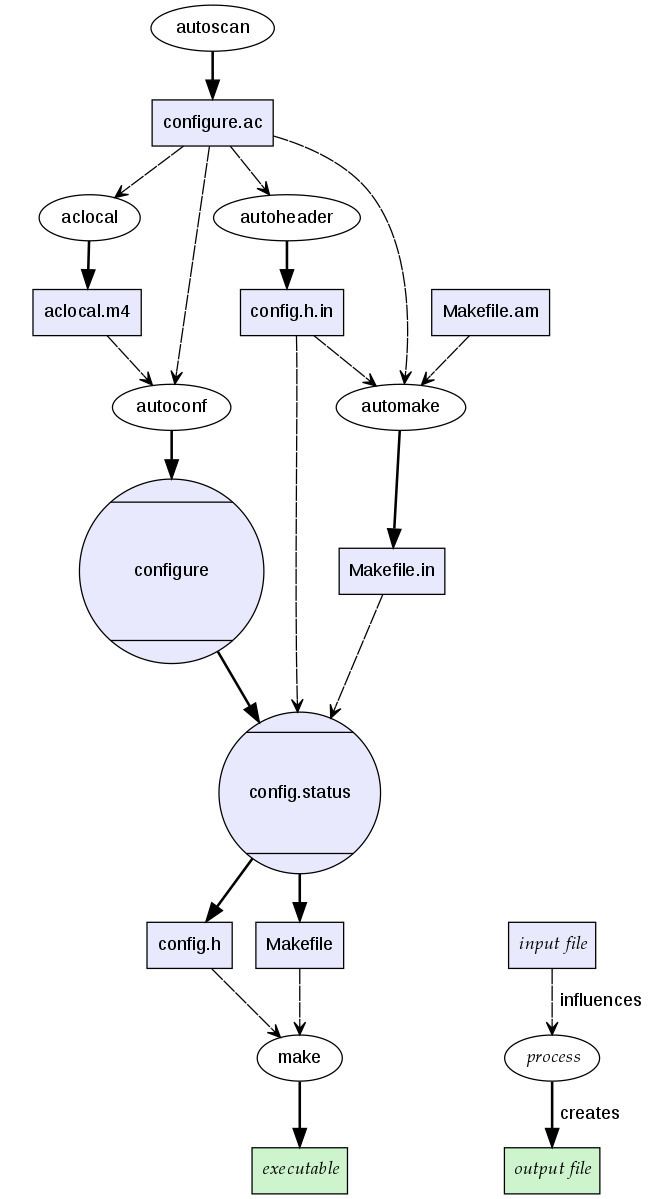Original author(s) Initial release 1991 | Operating system | |
 | ||
Stable release 2.69 / 24 April 2012; 4 years ago (2012-04-24) Repository ftp.gnu.org/gnu/autoconf/ | ||
GNU Autoconf is a tool for producing configure scripts for building, installing and packaging software on computer systems where a Bourne shell is available.
Contents
Autoconf is agnostic about the programming languages used, but it is often used for projects using C, C++, Fortran, Fortran 77, Erlang or Objective-C.
A configure script configures a software package for installation on a particular target system. After running a series of tests on the target system, the configure script generates header files and a makefile from templates, thus customizing the software package for the target system. Together with Automake and Libtool, Autoconf forms the GNU Build System, which comprises several other tools, notably Autoheader.
Usage overview
The developer specifies the desired behaviour of the configure script by writing a list of instructions in the GNU m4 language in a file called "configure.ac". A library of pre-defined m4 macros is available to describe common configure script instructions. Autoconf transforms the instructions in "configure.ac" into a portable configure script. The system that will be doing the building need not have autoconf installed: autoconf is needed only to build the configure script, that is usually shipped with the software.
configure.ac format
The GNU Autoconf manual suggests the following format for the configure.ac file:
History
Autoconf was begun in the summer of 1991 by David Mackenzie to support his work at the Free Software Foundation. In the subsequent years it grew to include enhancements from a variety of authors and became the most widely used build configuration system for writing portable free or open-source software.
Approach
Autoconf is similar to the Metaconfig package used by Perl. The imake system formerly used by the X Window System (up to X11R6.9) is closely related, but has a different philosophy.
The Autoconf approach to portability is to test for features, not for versions. For example, the native C compiler on SunOS 4 did not support ISO C. However, it is possible for the user or administrator to have installed an ISO C-compliant compiler. A pure version-based approach would not detect the presence of the ISO C compiler, but a feature-testing approach would be able to discover the ISO C compiler the user had installed. The rationale of this approach is to gain the following advantages:
Criticism
There is some criticism that states that Autoconf uses dated technologies, has a lot of legacy restrictions, and complicates simple scenarios unnecessarily for the author of configure.ac scripts. In particular, often cited weak points of Autoconf are:
Due to these limitations, several projects that used GNU Build System switched to different build systems, such as CMake and SCons.
